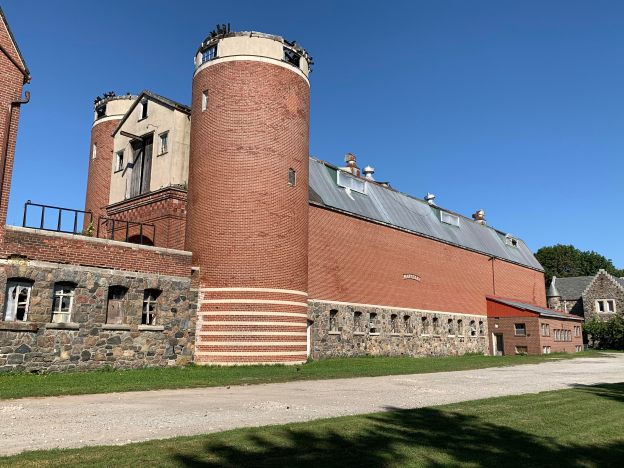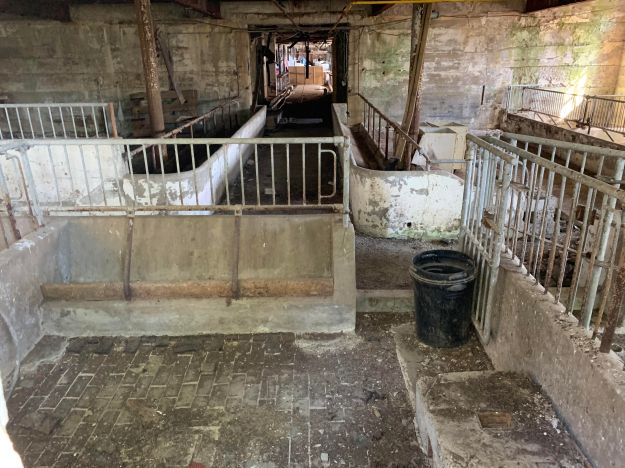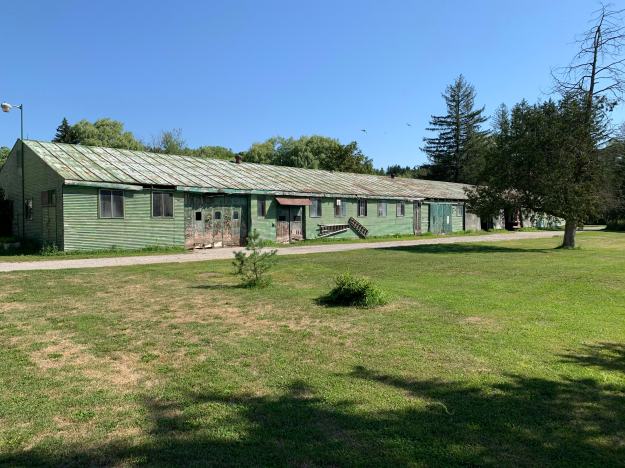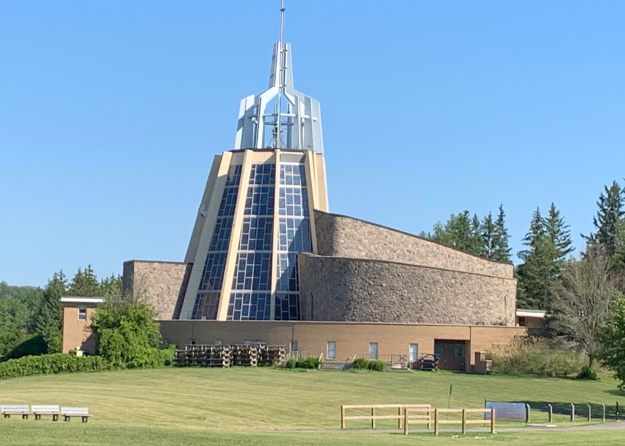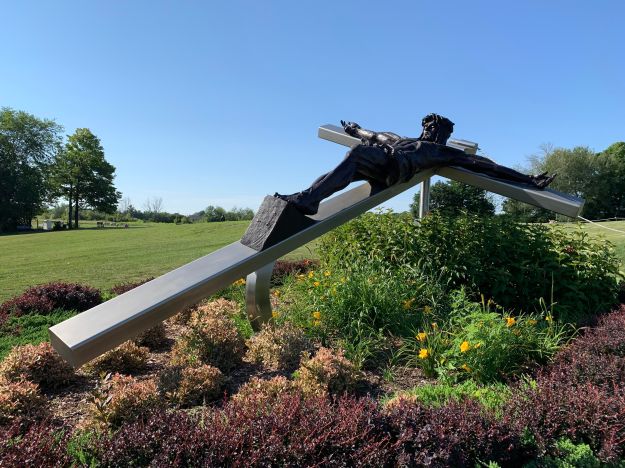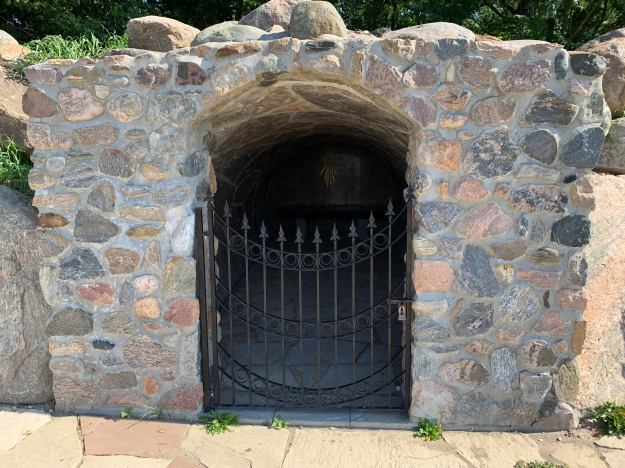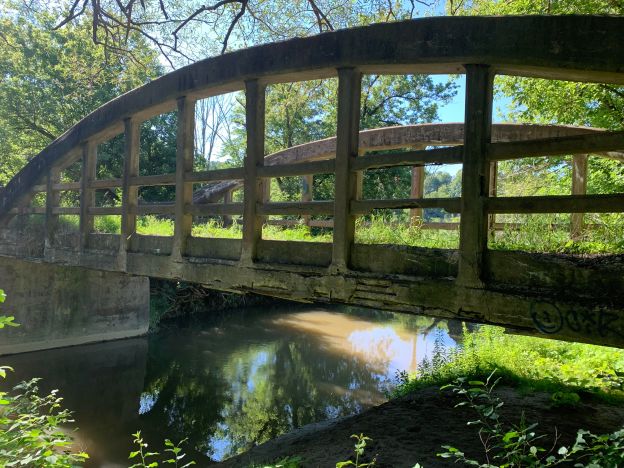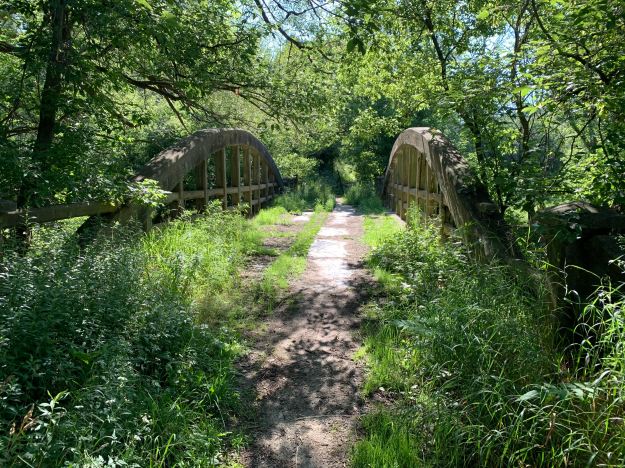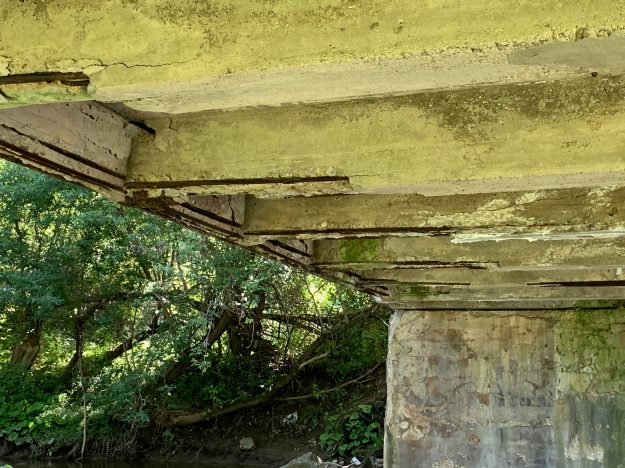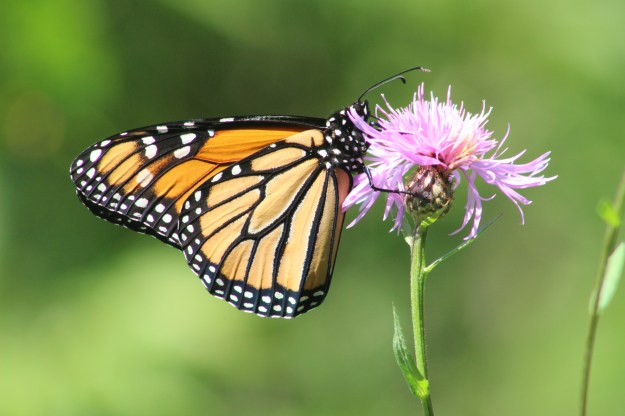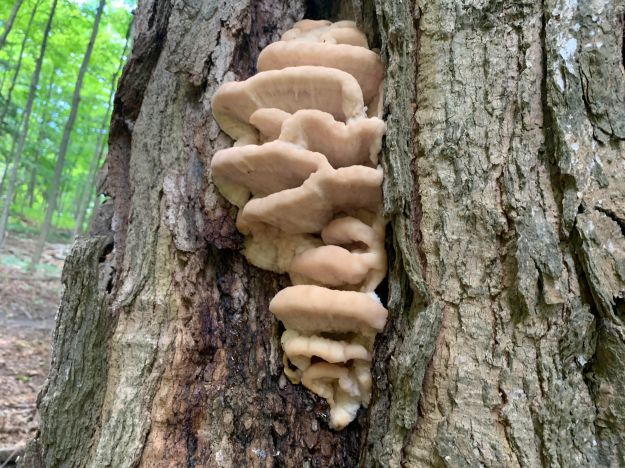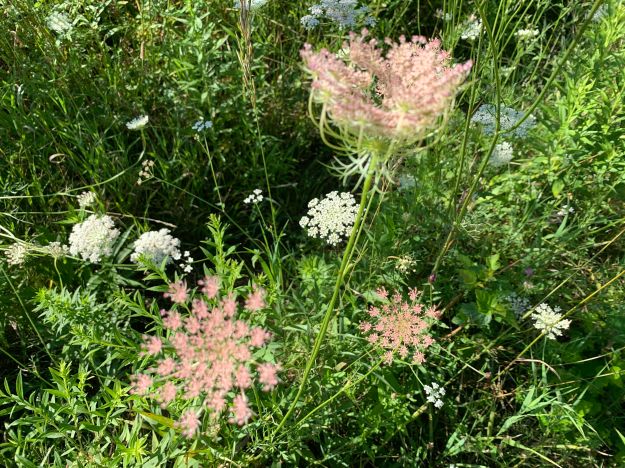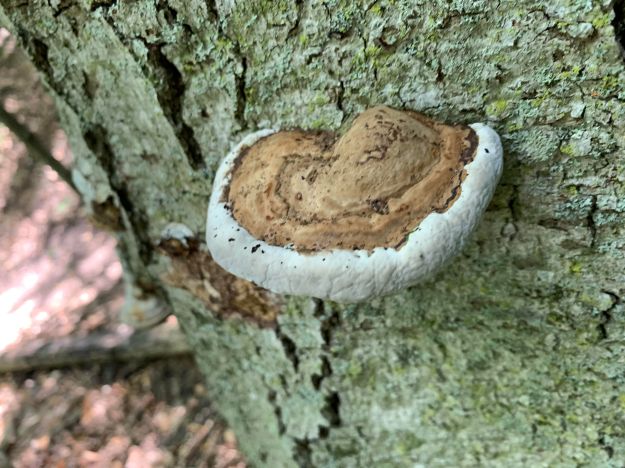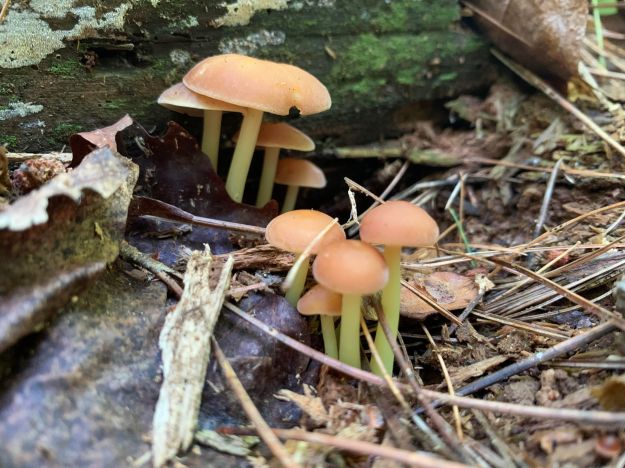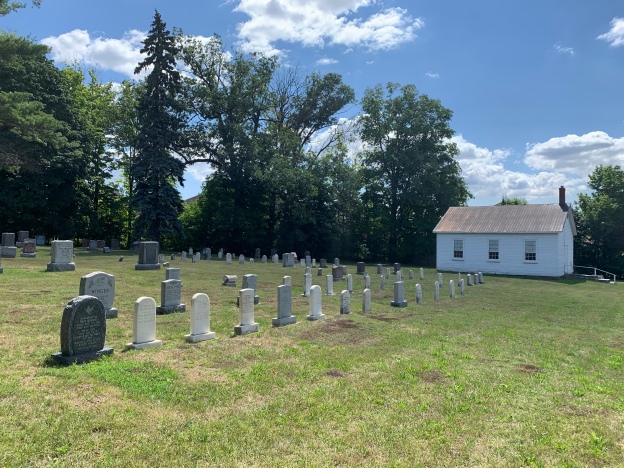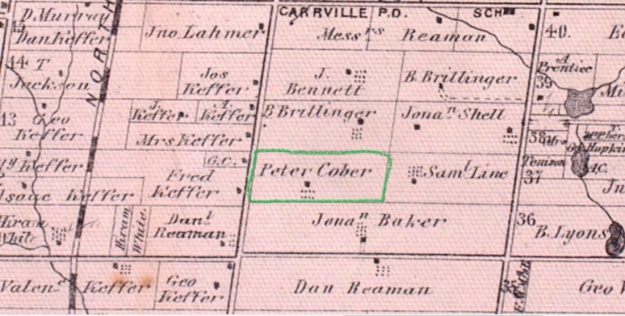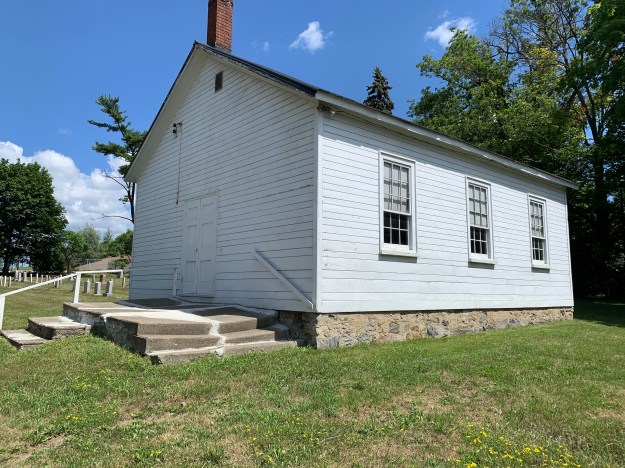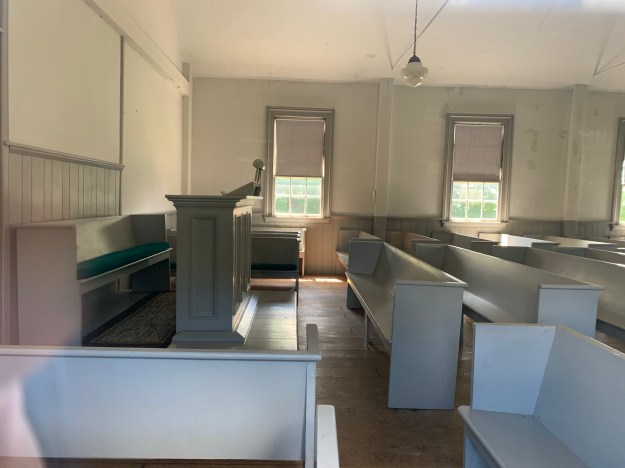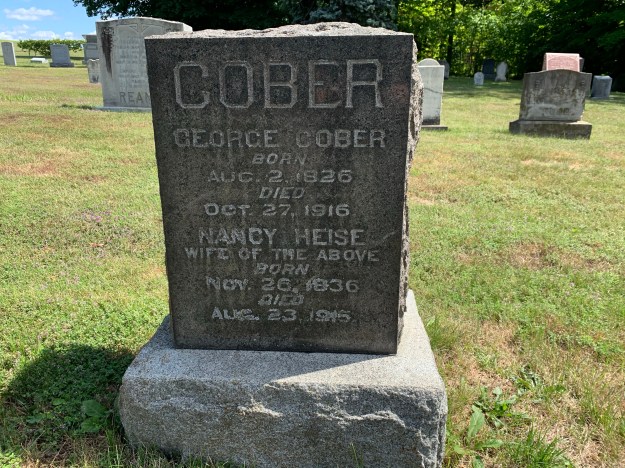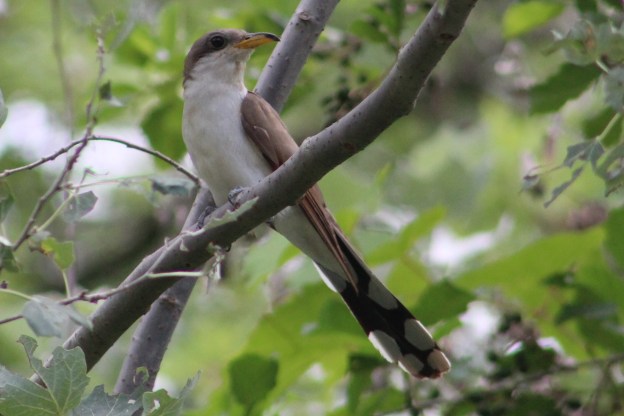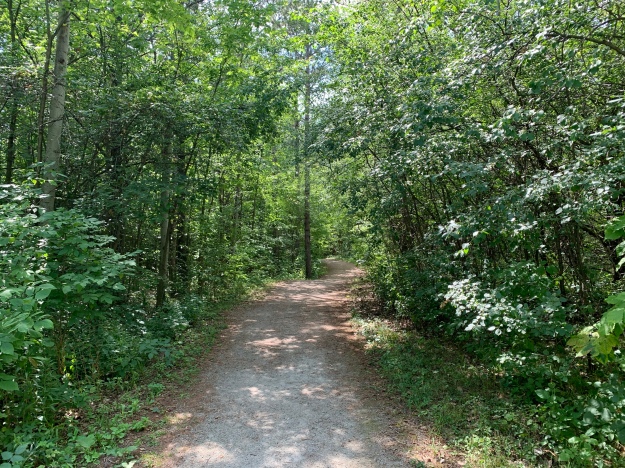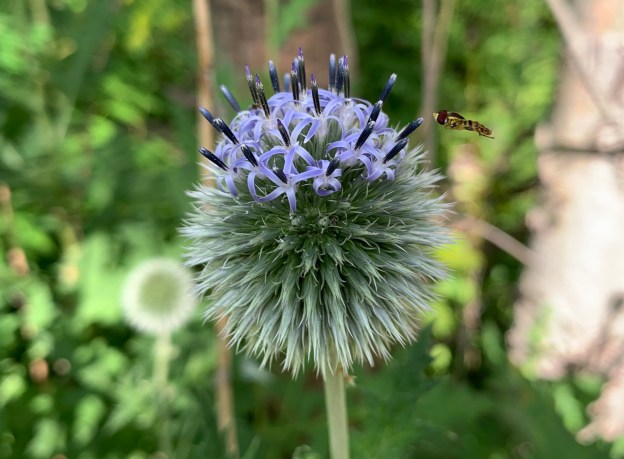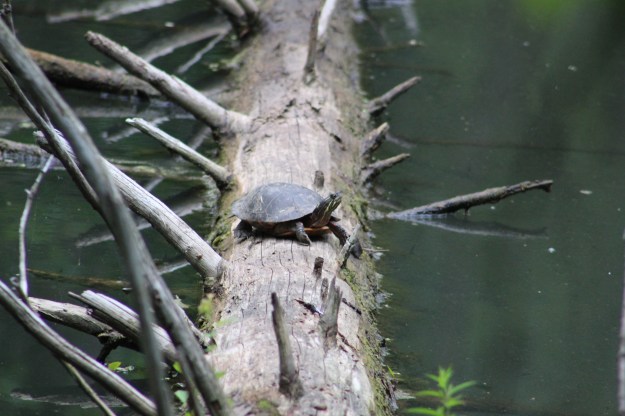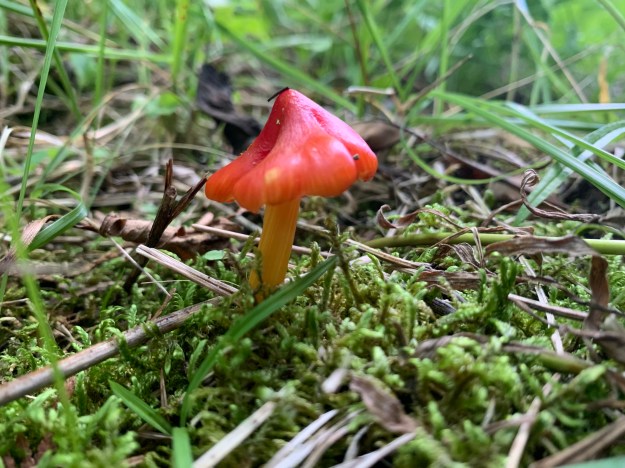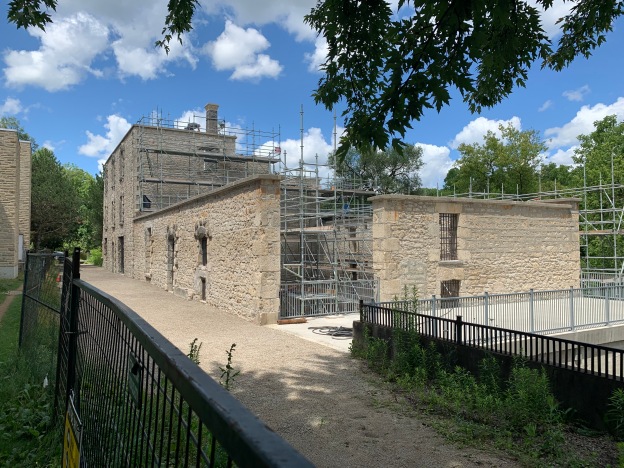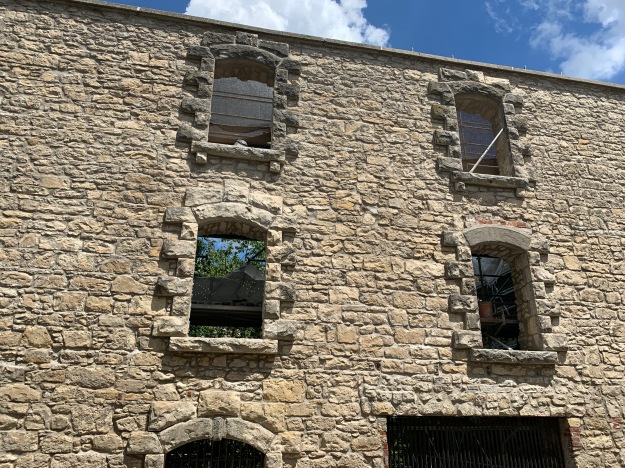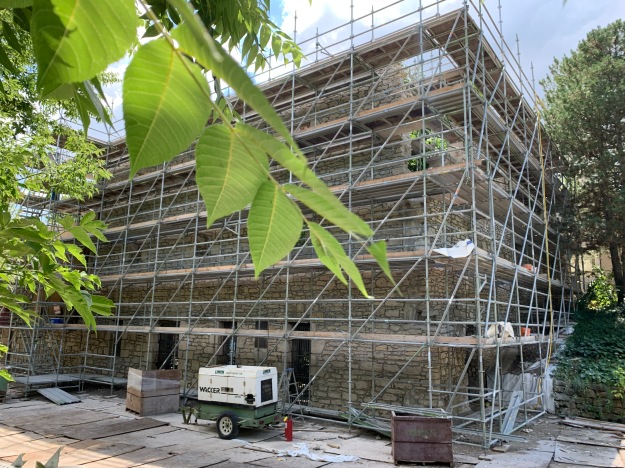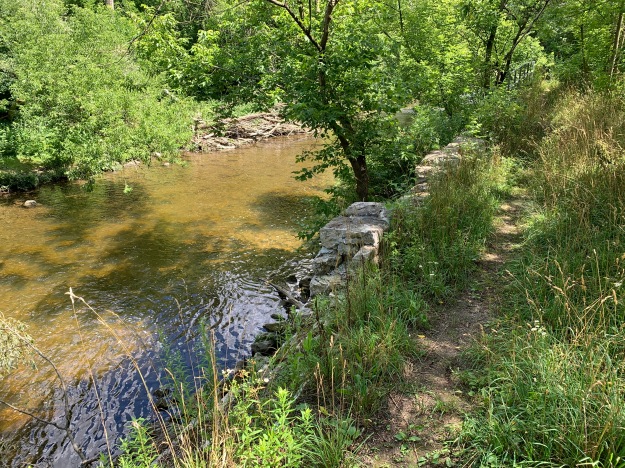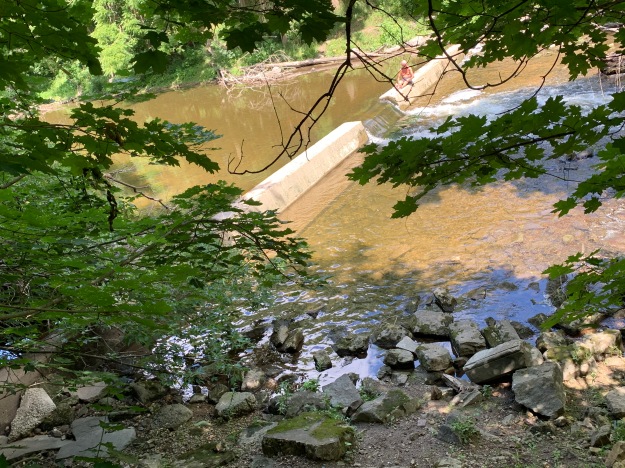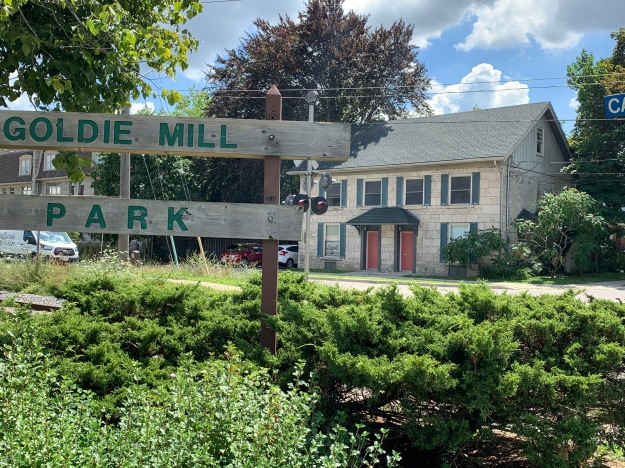Saturday, August 22, 2020
Lambton Mills has changed considerably since the days when it was a mill town on the Humber River, half in Toronto and half in Etobicoke. It isn’t a ghost town in the classic sense because so many people still live there but the ghost of the pioneer community is still evident. To explore we parked in the small lot on the west side of the Humber River at the end of Old Dundas Street.

Dundas Street used to cross the Humber River on an iron bridge set on stone abutments. When the new high level bridge was built Dundas Street was realigned and Old Dundas Street lost its bridge. The old stone abutments have have been collapsing and there isn’t much left on the west side of the river.

Lambton Mills grew up around several mills and soon became home to blacksmiths, inn keepers and many mill workers. North of Old Dundas Street you can still find the remains of the earthen berm that was part of the early mill dam in town.
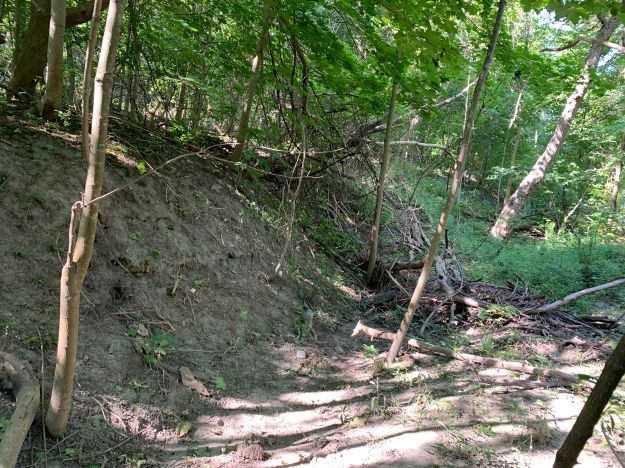
The archive photo below shows the large mill that William Pearce Howland built on the south side of Dundas Street. Howland went on to be one of the Fathers of Confederation and then served as the second Lieutenant Governor of Ontario.
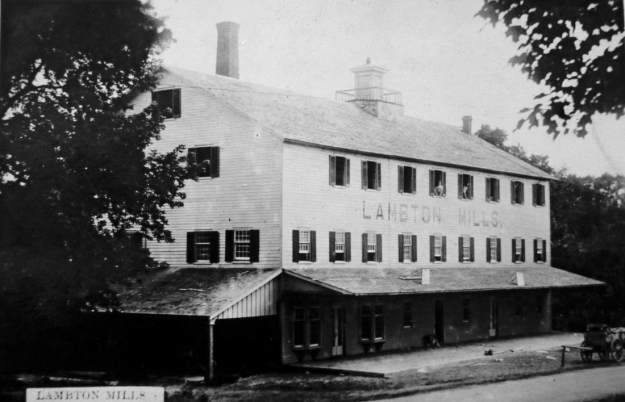
A short walk south along the river brings you to the remains of an earlier dam. This helps to mark the site of another mill.
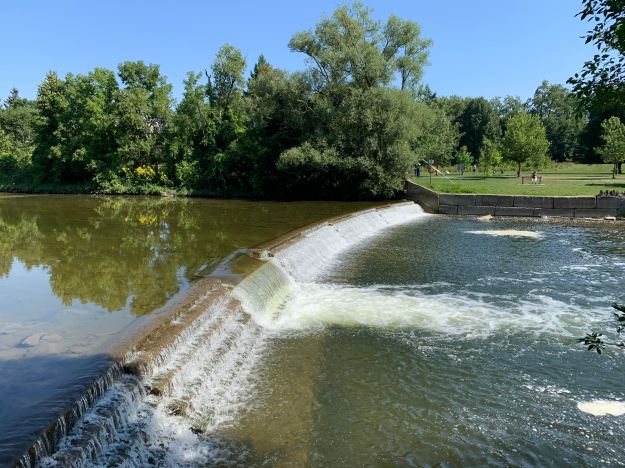
Millwood Mills was built by Thomas Fisher on the west side of the river and south of Dundas Street. It is shown on the historical atlas as G.M. for grist mill on the Fisher Estate. The two story mill burned down in 1847 and was replaced with a five story building. After Fisher’s death in 1874 the mill passed to his son who operated it for four more years before passing away himself. In 1880 the mill was converted to steam and became eventually became a rope manufacturer named Canada Woolen Mills. After a fire in 1901 it was permanently abandoned and now exists as a set of stone foundations in the trees.
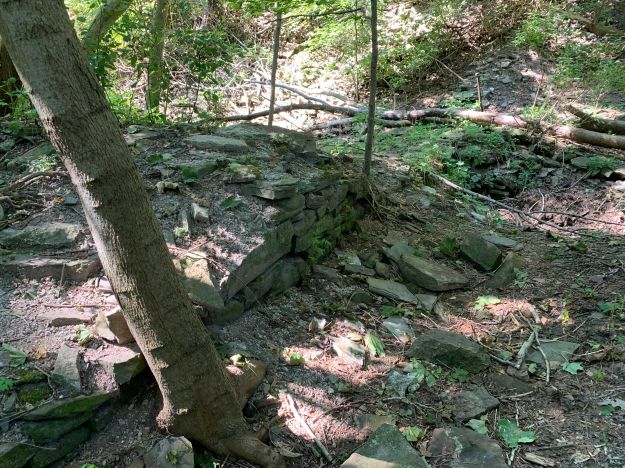
Lambton House was operated as a hotel on the Dundas Road beginning in 1848 as a rest stop and watering hole for travelers and horses alike. It served as a hotel for 140 years until closing in 1988. The property has changed a lot over the years and high rise apartments now stand all around the hotel and on the former site of the mill. The building itself has also changed over the years. Looking above the rear door on the east end of the building you can see where there is a set of lines that form an upside down V below the roof line. Lines like this can often be seen on older homes where a former porch has been removed. In the case of Lambton House, the pioneer equivalent of a garage was attached at the back of the hotel.

The photo below from the Etobicoke Historical Society shows the hotel as it appeared a century ago. The rear entrance on the side led directly to the drive shed where the horses sheltered. It certainly is a more attractive hotel without the apartment buildings in the background.
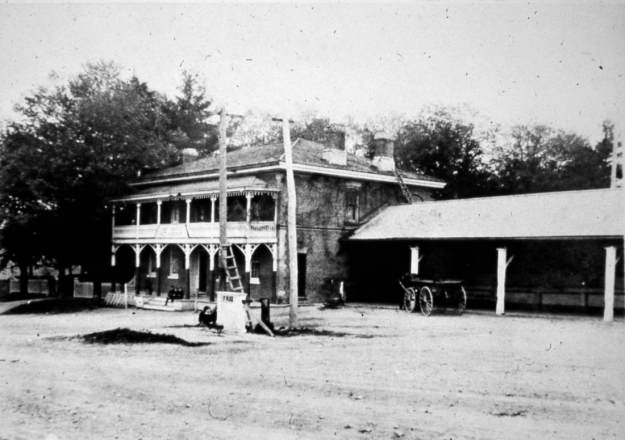
Thomas Colton owned one of the two blacksmith shops on Dundas on the west side of the river. It was here that he built his story and a half family home complete with a rounded window in the front gable.
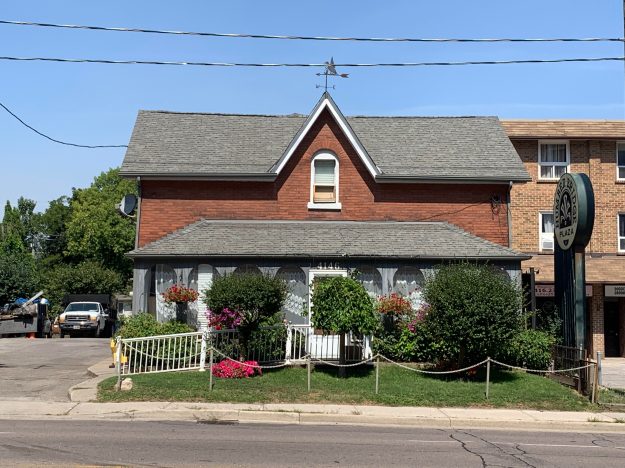
The Methodist congregation in Lambton Mills needed a new church building and local architect Meade Creech designed and built one for them in 1877. The first services being held on March 3, 1878 in the new brick building with Gothic architecture and a large rose petal window above the main entrance. The congregation joined the United Church in 1925 and soon needed a new building. The old one was sold and a new retail addition was put on the front and it was turned into a store. The city of Toronto has over 4,500 properties on their heritage register. This means that they cannot be altered without city council approval. There’s another 11,700 properties that are heritage listed which means that although they have been recognized as having heritage value they are basically unprotected. Developers must give the city 60 days notice of their intention to demolish a listed building. From the vacant lot that now exists where the church used to be it seems those 60 days have passed already.

The house at 30 Government Road was built in 1870 for Harry Phillips who was the postmaster for the town. This little house has a rounded arch window in the upper gable that is typical of Lambton Mills and a feature of Italinate architecture. The four leaf clover motif in the bargeboard on the gable is also typical of the era.
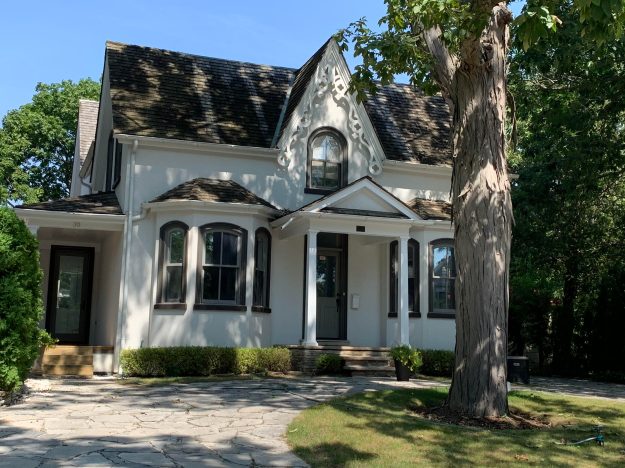
John Berry took over running Millwood Mills in 1890 and two years later he built his house at 125 Kingsway. The mill failed and in 1894 he moved to Quebec to run a textile mill there. He returned to Lambton Mills in 1914 and became treasurer of Etobicoke in 1918. He served as treasurer for twenty years, walking to Islington every day because he never owned a car.

A pair of historic homes stand at 7 and 9 Government Road where mill workers lived during the mid-1800’s.

Another historic home stands at 23 Government Road. This simple one and a half story house has the Lambton Mills vernacular gable window with a rounded arch.
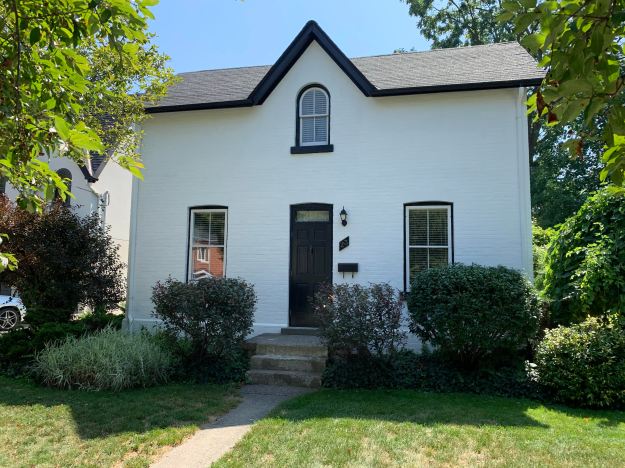
Lambton Mills has been totally surrounded with development but there’s still a large number of historic buildings on the west side of the Humber River. A walk through the area reveals many old gems complete with beautiful gardens.
Also see our feature Old Mill to Lambton Mills as well as the story of Millwood Mills
Google Maps Link: Lambton Mills
Like us at http://www.facebook.com/hikingthegta
Follow us at http://www.hikingthegta.com
Also look for us on Instagram

